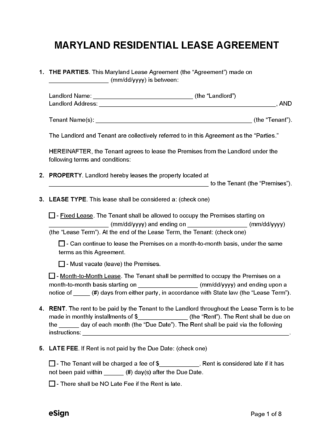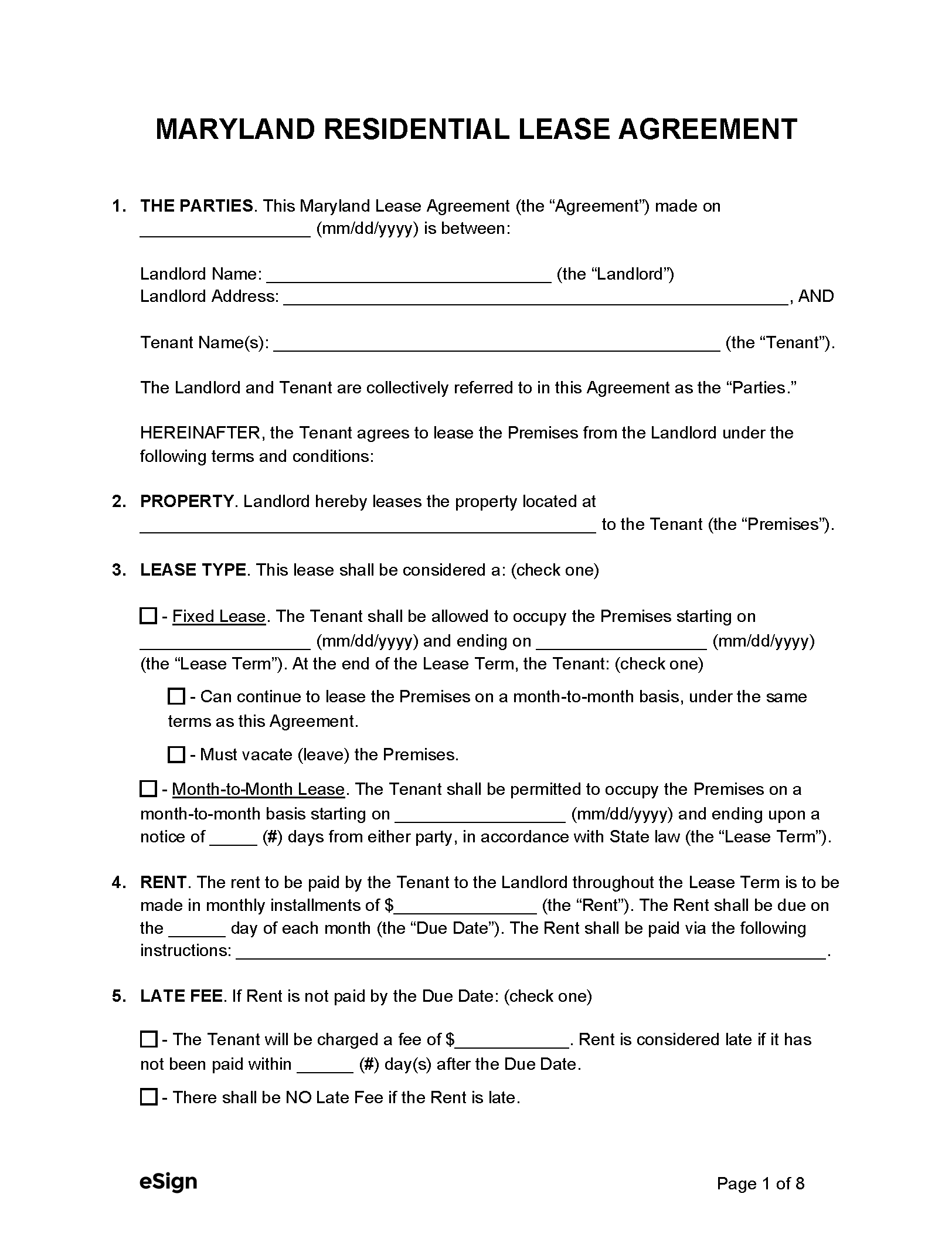
A Maryland lease agreement is the contract that enables a landlord to create a formal rental arrangement with a commercial or residential tenant. The provisions will include the length of the lease, cost of rent, security deposit amount, and both parties’ responsibilities and rights. All parties involved must sign the agreement for it to be considered legally binding.
A Maryland lease agreement is the contract that enables a landlord to create a formal rental arrangement with a commercial or residential tenant. The provisions will include the length of the lease, cost of rent, security deposit amount, and both parties’ responsibilities and rights. All parties involved must sign the agreement for it to be considered legally binding.
PDF Download
A Maryland lease agreement is the contract that enables a landlord to create a formal rental arrangement with a commercial or residential tenant. The provisions will include the length of the lease, cost of rent, security deposit amount, and both parties’ responsibilities and rights. All parties involved must sign the agreement for it to be considered legally binding.
4.7 | 73 Ratings Downloads: 9,309
Rental Application – A landlord will often use a rental application to obtain a prospective tenant’s employment and credit history to ensure they’re a suitable candidate.
Maximum Amount ($) – The landlord may not charge more than two months’ rent as a security deposit. [7]
Collecting Interest – All interest accrued from the security deposit must be returned with the entirety of the deposit owed. The landlord doesn’t have to pay any interest if the deposit is less than $50 or held for under six months. [8]
Returning to Tenant – The landlord must return the security deposit within 45 days of the termination of the tenancy. [9]
Itemized List Required? – If any deductions were made to the tenant’s deposit, the landlord has to send them a list of damages and costs by first–class mail within 45 days of the termination date. [10]
Separate Bank Account? – The funds must be deposited into a security deposit account at a federally insured institution that is exclusively used for security deposits. [11]
General Access – No state laws require the landlord to give the tenant a notice to enter. However, individual jurisdictions may require that notice be provided.
Immediate Access – Landlords aren’t legally prevented from entering without notice for emergencies.
Grace Period – There is no grace period for unpaid rent in Maryland. [12]
Maximum Late Fees ($) – Landlords may not charge a late fee greater than 5% of the cost of monthly rent. [13]
Withholding Rent – If the landlord doesn’t fix an issue that seriously threatens health and safety after receiving notice from the tenant by certified mail, the tenant can bring an action to pay rent in escrow to the court, or withhold rent and use the failure to make repairs as a defense against any attempted eviction suit . [14]
Non-Payment of Rent – Tenants must be given 10 days’ notice that their lease will be terminated if they don’t pay rent . [15]
Non-Compliance – If a tenant breaks the terms of their lease, the landlord can give them a 30-day notice to quit for non-compliance. [16]
Lockouts – It’s illegal for a landlord to change a tenant’s locks without a proper court order. [17]
Leaving Before the End Date – If a tenant abandons their unit before the lease ends, they will be liable for any unpaid rent. [18]
Month-to-Month Tenancy – Landlords must give month-to-month tenants 60 days’ notice before terminating their lease agreement. [19]
Unclaimed Property – Any belongings left behind by a tenant who has quit the property must be handled in accordance with local regulations.